8 common mistakes to avoid at silage harvest
Grass silage is one of the most valuable resources in dairy and livestock systems but mistakes commonly made at each stage can result in spoilage and poor intakes.
Debbie James met David Nelson and Peter Smith of Volac on a dairy farm in Wales to discuss eight pitfalls and how to avoid them.
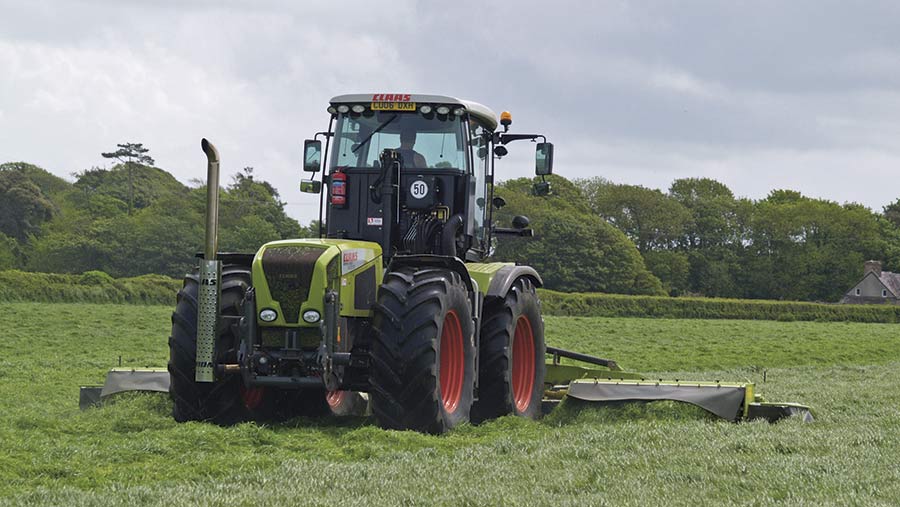
Cutting too low can run the risk of contamination
1. Cutting the grass too low
There is a temptation to adjust the mower to its lowest setting to harvest the maximum possible crop but do this and you risk making silage unpalatable.
See also: 10 ways to avoid injury when filling silage clamps
Cut too low, particularly in reseeds, and there is the danger of soil contamination and this will have a detrimental impact on fermentation in the clamp.
“Introduce soil into the clamp and you will bring in clostridia. This will produce butric acid and silage will be unpalatable,” says Mr Nelson.
“Everyone is keen to cut low because it gives more tonnes of silage but in fact the lowest part of the plant has the least nutrient value.”
He recommends a cutting height no lower than 4-5cm (1.5-2 inches) from the base of the plant and cutting higher when conditions are wetter than ideal.
Leaving one tiller will accelerate photosynthesis and lead to quicker regrowth.
2. Mowing with blunt blades
Mow with blunt blades and you will not only bruise the plant but machines will be fuel inefficient.
“Keep blades sharp or they won’t cut cleanly and the cut will be longer,” says Mr Nelson.
He recommends a chop length of 100mm for grass with a dry matter of 20%, 25-50mm at 20-30% DM and 15-25mm at a DM above 30%.
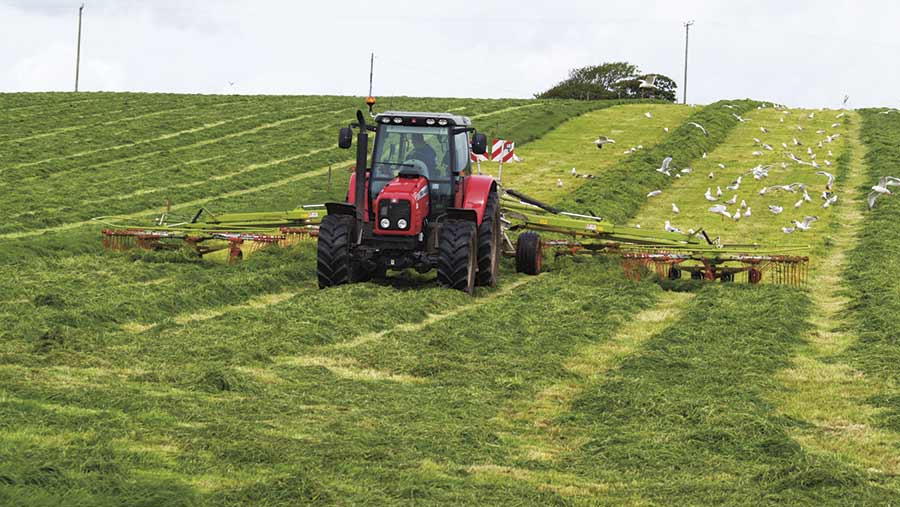
The longer grass is left to wilt the more sugar and protein will be lost from the crop
3. Leaving grass to wilt for too long
Grass will start to spoil within three hours of being cut.
Conversely, when it is not spread quickly enough, the wilting process will be slower.
On a good sunny day, moisture loss will be about 1% an hour but that will be higher if the grass is tedded. The longer grass is left to wilt, the more sugar and protein will be lost from the crop.
“The faster we can wilt silage, the more nutrients it will retain because we are preventing enzymes that break down protein and we are also stopping the plant from respiring and using its sugars,” says Mr Smith.
Grass needs to be spread around to help with wilting and spreading it around quickly will accelerate that process. Mr Nelson recommends cutting, tedding, rowing and clamping grass within a 24-hour period and targeting a DM of 38-32%.
Cutting in smaller blocks makes these targets easier to achieve.
“If you cut 200 acres [80ha] of silage in one go the logistics of spreading that grass once or twice is a challenge. A 100-acre block [40ha] is manageable, you can get that mown, tedded and clamped within 24 hours,” says Mr Smith.
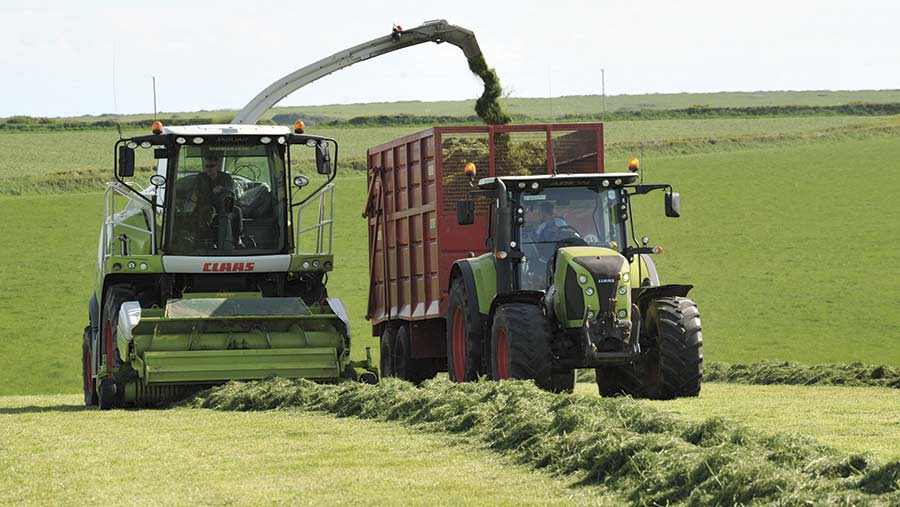
Spilling silage is akin to wasting cash
4. Overfilling trailers
Grass that spills from the trailer is wasted feed.
Small spillages may not seem relevant when there are many tonnes of silage being harvested but it is grass that needn’t be wasted.
“The grass that falls on to the floor is tonnage you have paid for,” says Mr Nelson.
“Don’t try to squeeze every blade of grass into the trailer, pay attention to the levels as the trailer reaches capacity.”
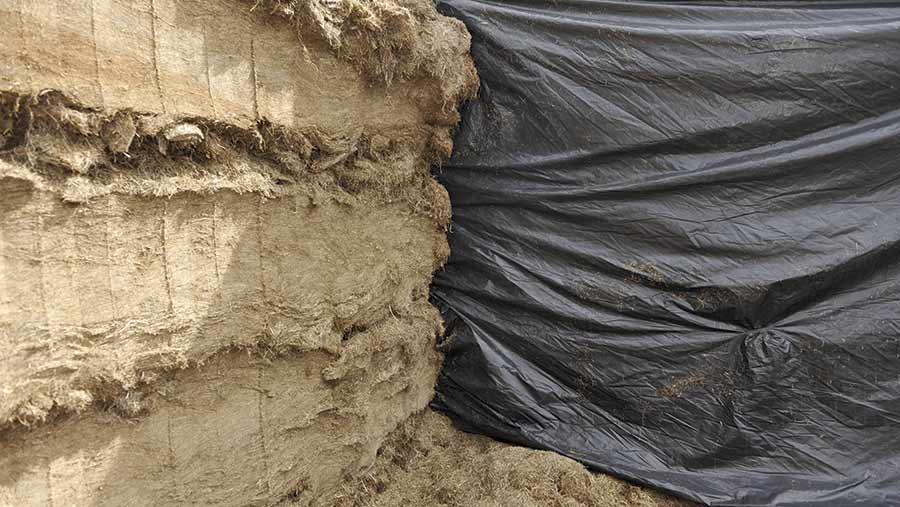
Cheap silage side sheets can be a false economy
5. Skimping on side sheets
Cost, time and effort are reasons why some farmers don’t line the sides of clamps but this is false economy.
This investment in plastic and labour will be repaid several times over because it will stop air ingress.
“By using side sheets you will stop air getting into the silage from the sides or shoulders of the clamp,” says Mr Smith.
Side sheets should be at least 1.5 metres higher than the height of the clamp walls so that they can be pulled over the top of the pit to give a good seal.
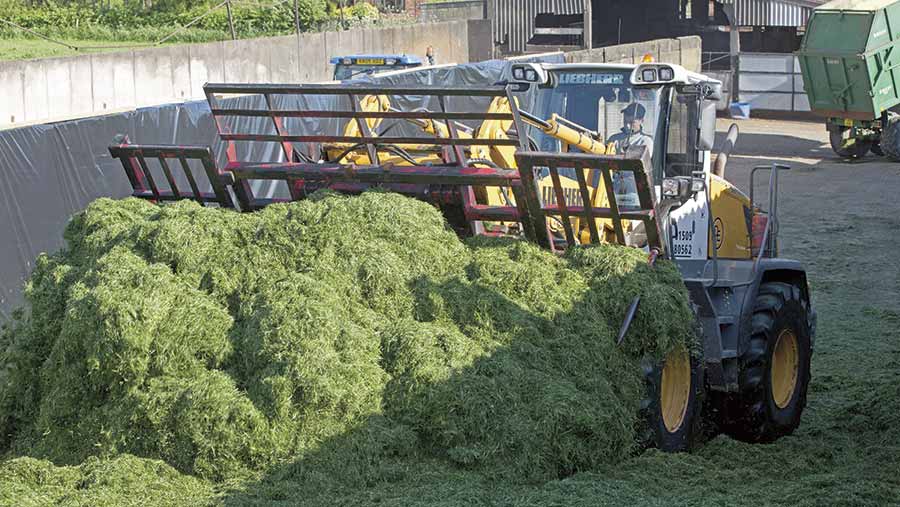
Thin layers of silage, no deeper than 15cm, will achieve a target density of 250kg/cu m of DM. © Tim Scrivener
6. Layering silage too quickly in the clamp
The pressure on the person operating the buckrake can be intense when there is little or no gap between trailers tipping their load.
This leaves little time to consolidate the layers of grass but this impacts on clamp density and trapped air will spoil the silage.
“Slow the process down, after all you are paying the bill and the aim of every contractor should be to make the best possible silage for their customers,” says Mr Nelson.
Thin layers, no deeper than 15cm, will achieve a target density of 250kg/cu m of DM.
If you can push your finger into the face of the silage it isn’t sufficiently compacted.
“It doesn’t matter how heavy the machine is, you can’t consolidate more than 15cm,” insists Mr Nelson.
“If there is air in the clamp, fermentation will be slower and you will create the ideal environment for yeast and mould to grow. This will mean a loss of nutrients and make silage less palatable so intakes will be lower.
7. Overfilling the clamp
A bumper harvest is welcome but attempt to squeeze all that grass into one clamp and you will reduce density by 10%.
If the clamp is too full to seal properly, air will get in and that means more wastage.
Creating a separate heap of excess for the first few feeds is a measure that some farmers use.
If a clamp is too steep it won’t pack down. “Gravity is your friend,” says Mr Nelson. “Keep the clamp as flat as possible.”
8. Incorrectly calibrating the additive applicator
An applicator set at the wrong calibration will either use too much product and waste money or too little and silage won’t reap the full benefits of the additive.
The applicator should be in good working order, clean and correctly calibrated so that the additive is applied in the correct volume recommended for that applicator.
Use a proven product for optimum fermentation, advises Mr Nelson.
“Use a product that has been selected to provide homofermentative lactic acid bacteria to reduce dry matter loss and improve animal performance.”
